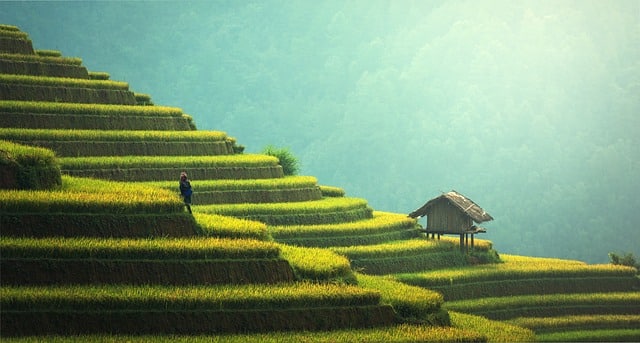Asia is a continent that is home to many mystical places and it has been the destination of many people for centuries.
This article discusses why going on a trip to Asia may be the best decision for you or your family. It also provides some tips on where to go and what to do in Asia.
How to Plan Your Trip to Asia’s Magical Destinations
Planning a trip to Asia is not easy. There are many destinations that you might want to visit and they don’t always fit in one itinerary.
Here, we’ll give you some tips on how to get the most out of your trip to Asia’s magical destinations.
1. Know the culture
Culture is important because it’s a deep-rooted part of human life. If you want to fully appreciate what you see, you’ll want to know the culture and how they live
2. Travel season
If you’re only visiting one destination in Asia, then traveling during the off season will be easier for you as there are fewer people around. On the other hand, peak seasons have plenty of tourists around so getting a proper picture may be more difficult.
3. Catching a glimpse
As Asia’s population is so large, you may not have time to take in all the sights you want to see due to crowds and other factors. However, if you’re lucky enough, you can get a quick glimpse of something special happening at the moment or something that’s never seen before. This can help your experience in a way that it will be memorable for years to come.
4. Catching a unique cultural detail
You can easily find unique cultural details from a different country by watching TV or reading books about the destination you’re visiting. However, if you go on your own and explore, there may be unforeseen moments that are worth taking home and sharing with friends.
5. Seeing something that reminds you of home
While visiting a new destination, it’s natural to want to find familiar things from your own culture and environment. If you’re lucky enough, you may see something like a street sign or piece of architecture which will make the region feel more like home.
10 Most Mystical Places to Visit in Asia
Asia is a continent of many different cultures and destinations. From the ancient to the modern, Asia has so much to offer when it comes to mystical places.
Here are the 10 most mystical places in Asia that you should visit:
1. Banaue Rice Terraces, Philippines
The Banaue Rice Terraces are UNESCO World Heritage site and are a natural wonder. The terraces have been built on the side of the mountain that contains an extinct volcano. The terraces were constructed by the Ifugao people, who inhabited the region for around 500 years.
Check hotels in the Philippines
2. Angkor Wat, Cambodia
The temples at Angkor Wat are stunning and unique. They represent a blend of ancient Hindu and Buddhist beliefs which are in stark contrast to the rest of Cambodia, which is predominantly Buddhist. Angkor Wat’s immortalizing grandeur has made it one of the most visited sites in the world.
3. Borobudur Temple Complex, Indonesia
Borobudur Temple is a Buddhist temple complex in Central Java, Indonesia. The temple consists of six monuments surrounding a central dome, surrounded by two smaller concentric circles of monuments and the outer wall. In total there are over 2, 000 Buddha statues.
4. Mount Koya, Japan
Mount Koya is a mountain town in Wakayama Prefecture, Japan. The town is the spiritual heart of the Shingon Buddhist sect, who believe that this place has been the location of the Buddha’s enlightenment. It is renowned for its natural beauty and cultural significance, and many visitors come to experience its peaceful atmosphere and Buddhist temples.
5. Ise Grand Shrine and Floating Torii Gate, Japan
The Ise Grand Shrine is a Shinto shrine that is located in the city of Ise, Japan. It is the most sacred place for the nation of Japan and has been designated as a National Special Place by the Japanese government.
The shrine’s main building, which is known as the Isonoe-in, was completed in 1633 and has been traditionally believed to have been blessed by Amaterasu.
6. Mount Bromo, Indonesia
Mount Bromo is a volcano in Indonesia. It is not just a tourist hotspot, it is also a spiritual spot. There are many temples throughout the area and it’s known for its beautiful landscapes and warm climate during the rainy season.
Mount Bromo is one of the most popular tourist attractions in Indonesia, with over 2 million visitors annually. The volcano is located on the border of East and Central Java in Indonesia, with Mount Penanggungan.
7. Mount Kailash, Tibet
Mount Kailash is an ancient sacred mountain. It is considered to be the most holy place on Earth and can only be reached by those who are lucky or blessed with a vision. All of the pilgrimage routes lead to a cave called the Chumig Gyel-tsen: a hole in the center of Mount Kailash.
8. Ise Jingu, Japan
The Ise Jingu is a Shinto shrine that was built in the 8th century, located on the island of Ise. In Japanese mythology, it houses a mythological tree that is central to the Shinto religion. The tree has some unique features, not found in other trees in Japan- such as bark that never wears off and leaves that never fall.
9. Himeji Castle, Japan
Japan, more specifically, Himeji Castle is a shining example of the country’s history and culture. It stands as a landmark for all that Japan has to offer. From its golden turrets to its extravagant gardens, Himeji Castle offers an incredible view from every angle.
10. Phnom Kulen, Cambodia
Phnom Kulen is a magical place in the heart of Cambodia, where you can find anything from temples to wildlife. It is home to an incredible array of wildlife, including tigers, elephants, and the rare white-cheeked gibbon.
Phnom Kulen is a part of the Angkor Wat complex. The vast temple complex was built during the Khmer Empire between 802 and 1220 AD by King Suryavarman II and his successors Jayavarman VII and Jayavarman VIII. The park covers an area of approximately 1,200 hectares (3,000 acres) with a population of over 100 species of mammals.
Phnom Kulen is also home to some ancient temples such as Ta Prohm which has been partially restored after being destroyed by looters in the late 1800s.

